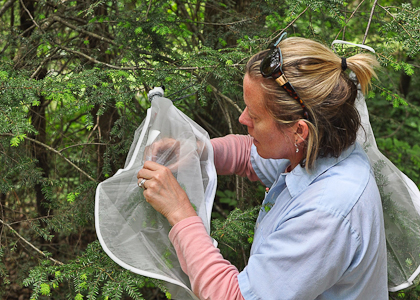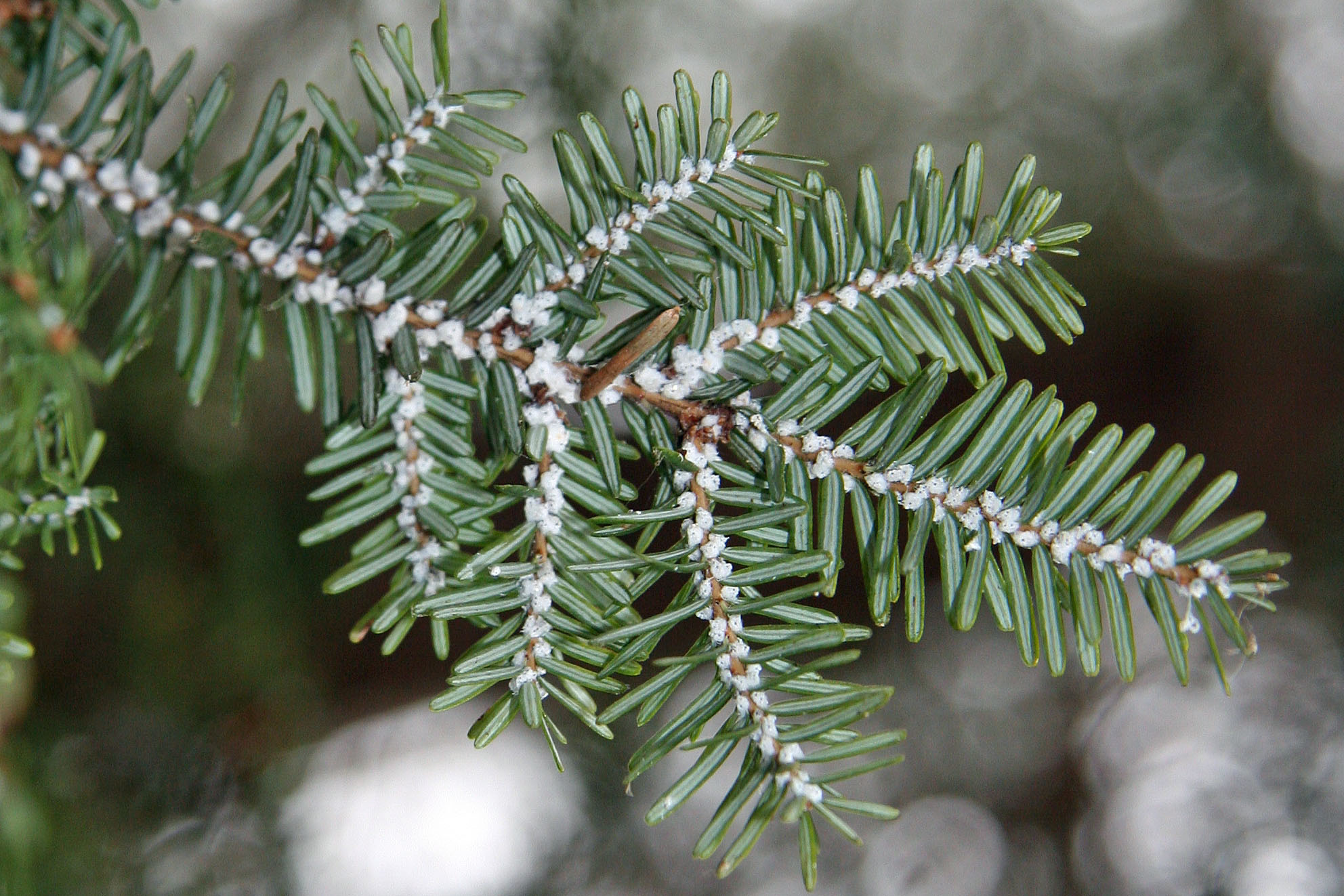David May, Communications Intern
It’s an incredible time to be alive. With a credit card and an internet connection, you can have just about anything from just about anywhere shipped to your doorstep, most of the time in 2 days. Every now and then, however, you can get a little more than what was in your cart. Nearly 50 years ago, the Japan-native hemlock woolly adelgid (HWA) slipped through the regulatory cracks of the shipping industry and found its way to the eastern US; since then, the pest has grown to epidemic proportions.
As the name implies, the HWA preys upon hemlock trees, various species of which are found on both coasts of America as well as eastern Asia. Although they are typically no bigger than one millimeter, their presence is easily detectable by the small tufts of what appears to be cotton along the branches of hemlocks. This “cotton” protects the bug as it sucks vital phloem from the young branches of hemlocks, causing needle loss and, eventually, death.
Thinking Outside the Box

For the forests of the eastern United States, the insect’s presence is unwelcome to say the least. Hemlocks are keystone species in many ecosystems of the 17 states they are found in, which means they’re fundamental to their ecosystem’s health. It also means that their devastation is a big deal.
As the HWA continues to spread from the Carolinas to New England, researchers are looking away from costly pesticides and towards something a little more natural: the silver fly.
Earlier this year, the silver fly, found in the Pacific Northwest, was introduced into hemlock forests in Tennessee and New York as a predator for the HWA, and the early results are promising. Entomologists Kimberly Wallin, from the University of Vermont, and Darrell Ross, from Oregon State University, are working with the Forest Service to see if the fly could be the answer to the eastern hemlock’s troubles.
“This is the first time this has been done with these flies; it’s a brand-new idea,” says Wallin. “We’re hopeful.”
The strategy of introducing biological control agents is not new, however. In fact, an attempt at controlling the HWA began in 2008 with the Laricobius nigrinus beetle. The tests are ongoing, but the results have not been very promising. There are many considerations when introducing any species into a new habitat, but the silver fly seems to fit the bill much better so far.
The Road to Success
Varying amounts of flies have been released in bags enclosed around infected branches in the two test areas; they were introduced near Grandview, Tenn. on May 12th, and around Skaneateles Lake in New York on June 5th. They have reproduced successfully and seem to be feeding on the HWA as of now, which is great news.

Getting this far hasn’t been easy. An experimental release such as this takes a concerted effort between regulatory organizations and researchers. It took Wallin and Ross 10 years of research and planning to get to this point, and it seems to have paid off so far.
“It remains to be seen whether they will survive and if their populations will grow to densities that significantly impact the hemlock woolly adelgid populations and, ultimately, the survival of hemlocks,” says Ross. “We probably won’t have answers to those questions for a year or two.”
This seems to be the Hemlock’s best chance at survival as of now. All that’s left to do is hope for the best and see how hungry the silver flies really are.